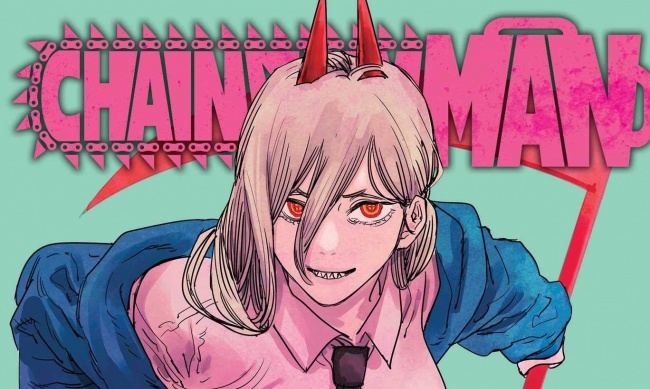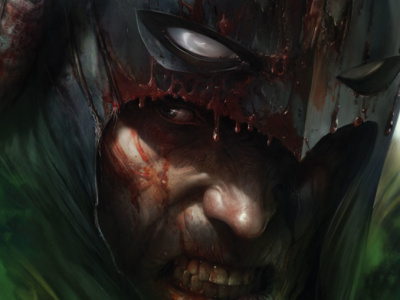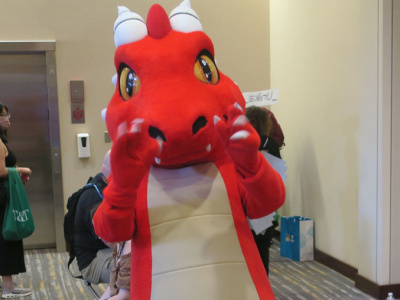Manga sales soared last year and it looks like 2021 will be even bigger (see “Manga Sales in North America Hit All-Time High in 2020”), but retailers and readers are running into a problem: Right now, there’s a manga shortage in North America. The COVID-19 pandemic has exacerbated existing problems in the supply chain, including shortages of printers and truck drivers, which is slowing the flow of manga to stores just when customers want it most.
“Manga sales just spiked during the pandemic, and it's almost impossible to get replacements right now,” Bob Schaffer of Dragon’s Lair Comics and Fantasy in San Antonio, Texas, told ICv2.
Ryan Higgins of Comics Conspiracy in Sunnyvale, California, only stocks first volumes of most manga because the store is so small, but lately when he goes to special-order later volumes for customers, he often finds they are out of stock. “Chainsaw Man [volumes] two and three and four, they're just gone,” he said. “I don't think we'll ever be able to get those back in for customers.” Higgins gets restocks from Diamond and Penguin Random House, but he’s still having trouble finding titles. “If it's not a current series, forget it,” he said. “Anything that’s finished, there's nothing available. There were select titles that obviously they do keep around, but if you're just looking for a random volume of, like, Attack on Titan, it is not available.”
The Boston comic shop Comicopia has a wide and deep manga collection (see “Successful Manga Retailing in a ‘Comic Bookstore’”), but owner Matt Lehman has the same problem. “If we're sold out of those popular titles, we have many other titles that customers can explore,” he said “These are also more likely to be able to restock, since they're less likely to be sold out from the publisher. However, we're still selling manga faster than we can restock it, as is evidenced by our increasingly large gaps [on shelves].”
Big retailers such as Amazon and Barnes & Noble can’t keep some titles in stock either; as of this writing, neither had volumes 2, 3, or 4 of Chainsaw Man or the first volumes of My Hero Academia or Demon Slayer: Kimetsu no Yaibaavailable for online purchase, and neither had a full run of Jujutsu Kaisen.
Before we get into why this is happening, here’s a tip from Ben Applegate, Director of Publishing at Penguin Random House, who oversees Kodansha Comics: “If you are buying manga for a store,” he said, “and there is an order you’re not sure will be fulfilled, we encourage you to contact your PRH sales rep to see what can be done.”
Publishers told ICv2 that they are doing their best to get books into shops, but it’s complicated, and it’s not entirely a new problem.
“Consolidation over the past few years in the U.S. printing industry has led to fewer plants and even fewer that can print manga,” said Kevin Hamric, VP Publishing Sales for Viz Media, the largest manga publisher in North America. “During the COVID crisis the demand for books (in all categories) rose, which in turn led to an increase in the number of reprint jobs. This led to printers being at max capacity and not being able to accept new jobs in a timely manner. Combine this with the fact that printers had to operate under COVID restrictions, as did book distribution warehouses, and the supply chain starts to slow down. There have been other issues during this time as well, such as a paper shortage, pallet shortage, carton shortage, employee shortage, truck driver shortage, and container, shipping, and port issues for those books that are printed overseas. The supply chain for most industries is still disrupted - the book industry included.”
“There are two key reasons why this is happening now,” said Yen Press Publisher Kurt Hassler. “The first is that printers have been struggling with capacity issues for some time, an issue that is not limited to just the manga market. Over the past two to three years, we’ve seen our printing lead time increasing steadily and substantially. This has been compounded by the dramatic increase in manga sales this year, with large orders from key accounts depleting inventory levels that would historically have been sufficient for a year or longer.”
While all the publishers said they were taking steps to solve the problem, they differed on when it would be resolved. “Our production team has gone from regularly working with three printers to eight printers in five countries, with more being evaluated,” said Applegate. “We’re doing our best to place reprint orders to account for transportation time, but it’s been difficult to estimate what the need will be when stores are getting completely cleared out and placing large reorders on a weekly basis.” He added that several of the printers they use are also trying to increase staffing and facilities. “It’s impossible to predict the future in 2021,” he said, “but I feel better every week about our ability to fill orders, and we are planning further ahead than ever before to meet holiday demand.”
“We are working closely with our key partners and also sourcing more printing overseas in an effort to replenish our stock,” said Hassler, “but even this is challenging given backlogs at ports around the world. Our hope is that we will be well-positioned for inventory in advance of the holidays, but it is a situation we expect to be working through on a daily basis in the coming weeks and months.”
Hamric sounded the most pessimistic note. “VIZ Media is working with all of our supply chain partners to get out from under this as quickly as possible,” he said, “but it is going to take some time - probably into early next year.”








